
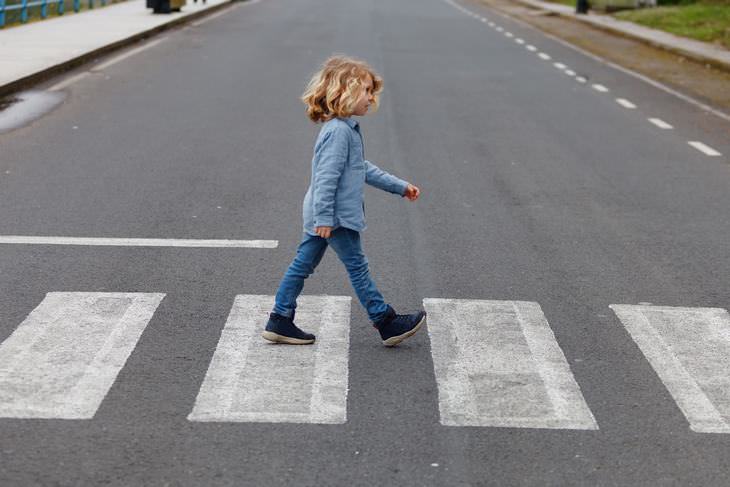
Crossing the street by foot seems like a relatively easy thing to do, for an adult. We look around, analyze the traffic, calculate the time we need to cross the road, wait for the traffic gap, then go. For a child, however, this can be quite a daunting task. Experiments conducted by scientists from the University of Iowa came to the conclusion that kids in their pre-teen years can have difficulties identifying gaps in traffic that are large enough to cross the road safely.
This is because young children may not have developed the necessary motor skills that adults have, allowing them to cross the street right after a car has passed. In fact, Jodie Plumert, professor of the University of Iowa states “Some people might think that younger children are able to perform like adults when crossing the street. Our study shows that this is not necessarily the case on busy roads where traffic doesn’t stop.” So, while most of the children did choose the same gaps in traffic as adults, they weren't as able to time their movement through traffic.
Experts at the university invited children aged 6, 8, 10, 12, and 14 years old, along with a group of adults to participate in the experiment. The children were placed in a simulated 3-D road traffic environment, where each of them had to cross the road with a string of running vehicles. The time between the vehicles differed between 2 to 5 seconds. Each participant had to cross the road 20 times.
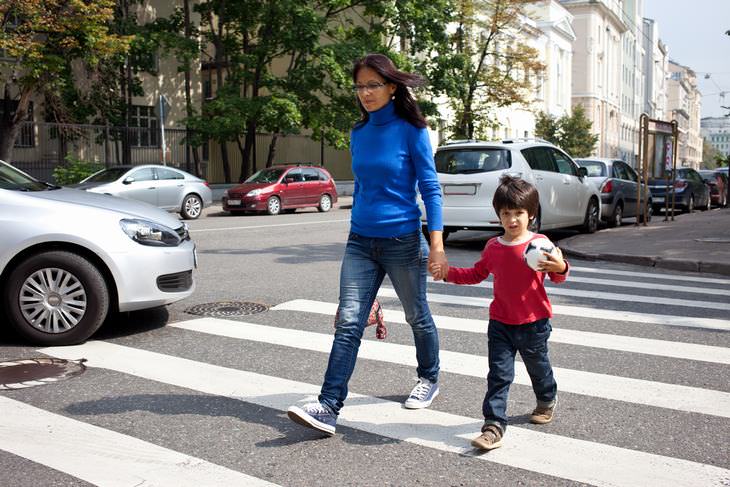
The results showed that 6-year-olds were 'struck' by vehicles 8% of the time, 8-year-olds, 6%, 10-year-olds, 5%, 12-year-olds were 'struck' 2% of the time, and kids aged 14 and older had no accidents. This is likely due to the fact that by the time a child has turned 14, they gradually develop the 2 most important skills for safe road-crossing. Firstly, they become better at analyzing the gaps in the traffic, and secondly, they are quicker at stepping onto the street after a car has passed, compared to younger children. So, it is essential that parents or grandparents of younger kids should take extra precautions.
For this reason, scientists firmly believe that it is better to be patient when it comes to letting your child cross the road alone, and wait until they have reached a certain age. Furthermore, teach your child to cross the street and encourage them to choose gaps that are larger than those you would choose for yourself.

Can Probiotics Improve Mental Health? Research Says YES
Studies repeatedly show that probiotics can be a potentially effective treatment for several mental health issues. This is what is currently known on the topic.

19 Stories Proving Once Again Grandparents Are Awesome
The presence of loving grandparents in one's life is certainly one of life’s most precious gifts, and these heartwarming photos prove it!
 6:59
6:59
Meet the Family Who’s Living Alone on an Island
Meet the family who's been living an isolated life on the remote island of Stóra Dímun in the middle of the North Atlantic Ocean.

The Link Between Excessive TV Watching & Cognitive Decline
Three recent studies find that the more TV you watch in your 40s to 60s, the greater your risk of brain health issues later in life. What can you do about it?
 2:40
2:40
Discover the ADORABLE Tiny Mouse Shops of Sweden
Swedish “AnonyMouse” artists create miniature shops for mice, and they are oh so cute!

Kids Think Differently... And It's Usually Hilarious
You must see these 14 hilarious child moments!

9 Signs Your Children are Hiding Things From You
How to understand if your children are indeed hiding their true feelings and what you can do right now to help them gradually open up to you.

Spot the 9 Signs of Harmful Family Dynamics
Identify the problematic dynamic in your family from the following 9 types, and note that there may be more than one such dynamic present in the

10 Things Scientifically Proven to Make Children Smarter
10 scientifically proven ways to make your children smarter. All easily done at home.

12 Important Body Gestures Babies Make
Get to know what these 12 body gestures babies make mean so you can really understand what your baby wants...
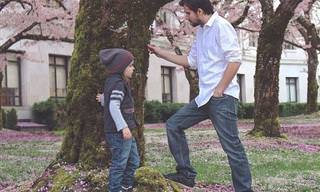
All Parents Need To Know These 13 Facts about Their Kids
Children and teenagers often behave in unexpected ways, and in order to learn how to respond and raise them correctly, we've compiled the following 13 facts!

10 Life Lessons We Should Pass to Our Children
Slowly, these lessons will sink into your child’s mind and change the way they think about themselves and see the world.

10 Tips to Fix the #1 Mistake Leading Couples to Break Up
This article gives tips on how to avoid the kinds of arguments couples have that lead to breakups.

How to Enrich and Maintain the Bond with Grandchildren
today we’ll introduce you to some tips to strengthen the relationship between grandchildren and their grandparents.

Prevent Children from Developing a Negative Body Image
In the following article, you will learn how to do this correctly and ensure a healthier and happier future for your children.

9 Psychological Parenting Tips That Parents Should Know
Raising kids isn't an exact science since every kid is unique, however, these 9 tips can help you in the most general of situations that all families experience.
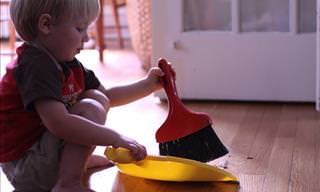
The Ultimate Kid's Cleaning Chores Guide: Infographics
When can kids help around the house and what can they do? According to one child expert, this guide is all you need to know.

Introducing the Tibetan Method of Raising Children
A unique method of raising kids inspired by the Tibetans.

Guide: When to Allow Children to Use Beauty Products
Let's understand when your children can (and maybe should) start using cosmetic products and what they can incorporate into their skincare routine according to their age.

Important: How to Tell if a Child is Being Bullied!
Know a child who is being bullied or is doing the bullying? Read through this guide.

6 Kinds of Child Photos You Should NEVER Share Online
In this article, we've shared some guidelines that will help you understand the kind of child photos that you should NEVER post online.

Hilarious: Kids, Chaos, and Kodak Moments
The 17 parents in the following pictures should be awarded the best parent award, if only for the way they deal with their silly kids!

12 Heartwarming Photos Depicting a Grandma's Love
There's no bond quite like that of grandmothers with their grandchildren. These photos by Sujata Setia capture this special energy.

8 Things You’re Doing That Are Spoiling Your Child
The desire to help our children and keep them happy all the time may make them spoiled, so avoid it by following these 8 tips!

Marriage: 7 Fascinating Studies We Should All Read
7 different studies that shed some light on marriage, and perhaps offer insights and tips that will help you understand your own relationship better.

How to Get Your Kid to Open Up About Their Day
Why do your kids or grandkids avoid talking about their day? How to get them to open up?

Help Strengthen Your Child's Immune System With These Tips
As parents, we’re always concerned about cold and flu season. Learn how to identify signs of a weak immune system, and 10 ways to strengthen it.

15 Wonderful Quotes That Perfectly Describe Grandparents
These beautiful quotes and sayings remind us once again how wonderful a role grandparents play in our lives.

Babies Are Capable of Far More Than Most People Imagine!
Babies are far more than just wonderful bundles of joy, as these fascinating scientific findings have proven.

Family Guide: How to Avoid Power Struggles With Your Child
In this article, you will find 4 important tips that will help you better understand what your child is going through and how to encourage their cooperation instead of engaging in power struggles.
 8:02
8:02
This Short Film Teaches Us Never to Lose Creativity
This award winning short film is called 'Alike', and is called that because it deals with a topic we're all familiar with - being creative and not the same as everyone else.

Effective Parenting Styles and Techniques for All Ages
This article highlights how parenting styles and approaches intersect and vary in effectiveness depending on the child's age.

Improve Your Child's Life By Teaching Them These 15 Things
15 important insights about approach, effort, and the importance of choosing friends, and many more essential things that your children should know.

The Funny Side of Parenthood In 14 Hilarious Captures
These funny photos perfectly capture the complexity of being a parent. You can be tired, exasperated, and laughing out loud all at the same time.
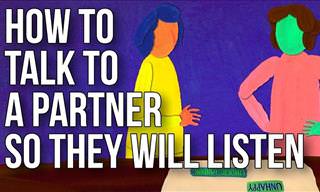 5:25
5:25
Learn How to Get Your Partner to Start Listening to You
Here are a few techniques that you can try to get your partner to start listening to what you actually tell them.

7 Routine Breaking Indoor Activities For Kids
Here are 7 screen-less indoor activities you can do with the children to create some good long-term memories.

This Devoted Dad Has Some Words to Share....
Michael Mitchell is a devoted American father who collects tips from various fathers about raising kids, and these are some of his most interesting!

99 Ways to Make Sure a Marriage Withstands the Test of Time
if you want a rock solid marriage, one that will go the long haul - Read these words of advice carefully, and write them on your heart!

If a Child Lives with Praise, This Is What He'll Learn...
How should we go about raising our children to be strong, independent and certain of themselves?
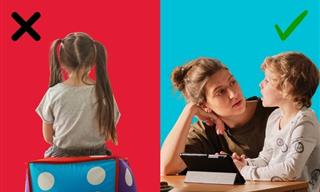
7 Questions That'll Teach You a Lot About a Child
Here are 7 such questions that can help you as parents better understand your children, identify possible issues, and strengthen the bond between you.

How to Handle 6 Frustrating Relationship Situations
We've gathered 6 particularly frustrating issues in relationships and some tips to help you solve the problems you’re experiencing – no matter which side you're on.

Children's Allowance: When and How Much Should You Give?
In the following article, you'll discover what experts in psychology, parenting, and financial management have to say on the subject, along with 5 tips to help you give your children pocket money

Worn-Out-Mother Syndrome: What You Need to Know
what exactly causes Worn-Out-Mother Syndrome, 8 signs , and what you should do to get back on track and deal with it successfully.
 2:41
2:41
Here's Why Children's Drawings Are So Important for Us All
This informative video explains why children's drawings are so important for their own development, as well as for the advancement of society as a whole.

What Is Pebbling and Can It Help Grow Your Relationships?
Pebbling is a social media trend that refers to small, thoughtful gifts or acts that show you’re thinking of someone. It may help foster connectedness, affection, and strengthen relationships.

Advice: How to Deal With Toxic Family Members
This article will help your identify toxic family members and how to deal with them.

A Guide for Buying Toys for Kids by Age
Here is our guide to buying children's gifts by age.
To enable your Ad-Free Subscription, please fill the fields below
Your subscription was successful, now you can enjoy an ad-free experience!! Note: To make sure you get no ads, please make sure to log in to your account. If you are logged in already, then refresh the page. The subscription can be cancelled at any time.


